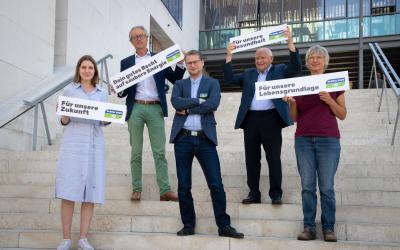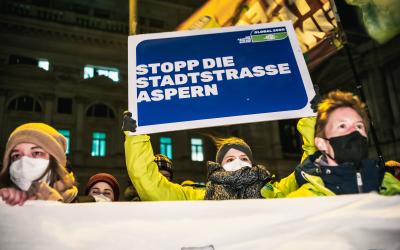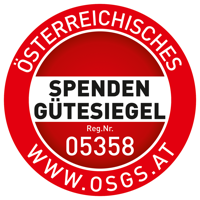Welcome to the online-congress "Visions for Transition - How agriculture and cities of the future can save biodiversity"


We would like to thank everyone who joined our first online-congress.
Missed a presentation?
No problem: From May 18, all presentations will be available online as a video
Which presentations do you like to watch?
Room 1: Agriculture of the future
Room 2: Biodiversity in cities & municipalities of the future
Conference review
How do we want to live in the future? How can we live in the future? What will our landscapes look like in 10 or 20 years? What are we going to eat? What will our villages and cities look like? In view of the climate crisis, the extinction of species and many other global sustainability crises, one thing is clear: if we want to continue to live in relative prosperity, we must not continue along the same path we’ve been on. At the GLOBAL 2000 conference “Visions for Transition”, more than 20 top-class scientists demonstrated what possible alternatives could look like. Conventional agriculture is at a dead end. It is both a contributing cause and a victim of a series of catastrophic misguided developments that have led to the extinction of species and the climate crisis. At the same time, more and more people are living in cities ‒ over 60 per cent of the world’s population will be doing so by 2030. While cities occupy only three per cent of the world’s surface area, they are responsible for 70 per cent of greenhouse gas emissions. Their inhabitants increasingly suffer from the consequences of climate change and alienation from nature. The question of how cities can remain worth living in in the future is becoming increasingly poignant. The city and rural areas alike face enormous challenges.
How can the way out of this crisis prove successful?
This forward-looking question was explored by the Austrian environmental protection organisation GLOBAL 2000 at the international online congress “Visions for Transition – How Agriculture and Cities of the Future Will Preserve Biodiversity” on 11 and 12 May 2020. The topic attracted an overwhelming amount of interest: more than 10,000 participants followed the presentations of the 24 speakers from all over the world on their smartphones and computer screens. The unanimous credo was “To continue as before is not an option!”
On both days, the programme was divided into two parts. On the one hand, the topic was “Agriculture of the future”, while on the other it was “Biodiversity as well as cities and communities of the future”. The top-class speakers were selected for their multidisciplinary and practical orientation. After compact 20-minute presentations, there was time and space to answer the questions posed online by the visitors, as well as for comments. The generally accessible lecture series were supplemented by two “roundtables” with a limited number of participants. While the “Next Generation Roundtable” looked for visions concerning food and consumption of the future, the “Agriculture Roundtable” brought together representatives of the Austrian Chamber of Agriculture, BIO Austria and the Austrian Small and Mountain Farmers’ Association to discuss the question of what conditions politics, trade and society need to create in order to enable and motivate farmers to take the transformative step towards more robust ecological change. The results of these discussions were then presented and discussed.
The conference ended with a future-based workshop designed by Rob Hopkins, Miriam Bahn and Martin Wildenberg. Here, participants were able to develop their own visions and put them into words.
Results
We live in a complex, interconnected world. A world in which our global, profit-oriented economic system leads to an increasingly massive exploitation of people, animals and the environment – for the benefit of a global minority. This has dramatic implications for progressive climate change and leads to worrying and irreversible losses of biodiversity.
“To continue as before is not an option”
Scientists, community and farmer representatives, as well as environmentalists and representatives of youth movements such as Fridays for Future and Landjugend agree on this. But what are the alternatives?
“Transition movements” conceal the aim of comprehensive systemic change. No “muddling along” in the slightly modified and optimized old system. No “more of the same”. A revolution is what’s required.
Together, the aim is to achieve a transformation of social and ecological values that has a comprehensive impact on our social life, political decision-making processes and the economy. Only in this way can a fundamental change take place from within. And only this approach would allow us to achieve the global development policy goals (Sustainable Development Goals). The conventional green economy leaves justice, the fight against poverty and hunger, education and more unanswered.
To get the transformation on track, Rob Hopkins suggests that we train our creativity. Because at the beginning of every ground-breaking movement, there is a thought; an idea. When we put into words how we want to live, we set processes in motion.
Far-reaching changes in all areas
There was broad agreement among the scientists that overcoming the biodiversity and climate crisis requires profound changes in all areas of our food system. That urgent action is needed, especially in the EU, to create a resilient food system that respects the planetary boundaries we have already crossed. And that key areas such as the loss of biodiversity, overfertilization, soil degradation and climate change urgently need our attention. Chemical- and energy-intensive agricultural production methods were identified as a major driver of the current ecological crises, and their devastating effects on rural socio-economic structures were also pointed out. Not only is the pressure that this form of agriculture exerts on nature enormous, but so too is the pressure on the farmers themselves.
The scientists were all convinced that modern, biodiversity and climate-friendly agriculture is based on agroecological principles. That instead of large-scale monocultures, small-scale structures should be promoted. Protect hedges and windbreaks from wind erosion, provide nesting and shelter for insects and farm animals, and improve self-regulation within the agroecosystem. Mixed farming systems, site-adapted crop rotations, diverse crops and the preference for local and resistant varieties make the system more resilient to the growing challenges of climate change. They attached particular importance to the health and diversity of soil life. Healthy, humus-rich soils would enable good yields, reduce pest presence and absorb water just as well during heavy rainfall events as they store it during drought.
A transformation of our agriculture requires changes in the entire food chain. This includes the behaviour of consumers (nutritional and purchasing habits), trade and distribution (cost truth, innovative marketing systems), and legal requirements and incentives (agricultural subsidies).
The ecologist Wolfgang Cramer particularly emphasized the great role played by consumers. More appreciation for food and healthy nutrition is needed. The aim is to provide a predominantly plant-based, organic diet – in the interests of climate and species protection as well as health. At the same time, Cramer emphasises that by no means do all people have to eat a purely vegan diet – but that for meat, “quality before quantity” and the type of animal husbandry involved is particularly important.
The scientists agree
They repeatedly emphasised that the European Union’s Common Agricultural Policy (CAP) could have a positive influencing effect if it was aligned with the objectives of the European Green Deal. Farmers should receive the financial support they need to make their production methods sustainable. These subsidies would be linked to clearly defined ecological criteria in production.
The botanist Franz Essl from the Austrian Biodiversity Council demanded, among other things, that the CAP (Common Agricultural Policy) should provide sufficient financial support for areas that are managed in the interests of biodiversity. It’s a demand that is also supported by Julianna Fehlinger, who represents the Austrian Mountain and Small Farmers. Past experience has shown that many measures supported under the guise of environmentally friendly subsidies have had no effect on biodiversity loss. Farmers are trapped in a corset of dependencies due to low prices and have far too little room for manoeuvre. In other words: they can’t, even if they wanted to. According to Christof Kuhn of BirdLife, ten to 15 per cent of the biodiversity areas in the landscape would be sufficient to ensure stable species diversity.
The term “agroecology” was often used as a solution to global crises. Nicolas Dendoncker, a proponent of this agricultural and social movement, explains the term by means of permaculture. Agroecology considers all habitats and their interrelationships.
Dendoncker does not see “smart farming”, which relies on digitalisation and new technical methods, as a solution to the problems at hand. This is merely a new approach which continues with the old system. This would further increase the dependence of farmers on the agroindustry.
Violette Geissen, Professor of Soil Degradation and Land Management at Wageningen University, had a more positive outlook on new digital technologies. Particularly in the use of autonomous agricultural robots for non-chemical weed control, there is potential for optimising agroecological cultivation systems.
The connection between health, the occurrence of pandemics and the use of global resources has often been pointed out – for topical reasons, too. Geissen also criticized the improper distribution and waste of food. Cheaply produced food is not only unhealthy, but is also costly for the environment: the 2,000 or so pesticides on the European market cannot simply disappear. They land in our food, air, soil and water. In this context, bee ecologist Dave Goulson also noted that three quarters of all bee-friendly plants already contain pesticides. The physician Martin Grassberger vividly explained how strongly industrial agriculture affects our health. The resulting harmful disturbance of the intestinal flora is already widespread in our society – and is the cause of many chronic diseases. According to Josef Settele, biologist and member of the World Biodiversity Council, much larger pandemics threaten to arise in the future. After all, 70 per cent of all newly emerging diseases would be transmitted from wild or domesticated animals to humans. Because they were destroyed, the lack of ecological barriers encouraged this. Bottom line: our interaction with nature and animals has a direct influence on our health and safety. If we carry on as before, industrial agriculture and our hyperconsumption-driven economic system will threaten our health. The environmental politologist Alice Vadrot sees the coronavirus crisis as an opportunity. Old structures could now be questioned and reorganised.
What will the agriculture of the future look like?
It is organic, regenerative and diverse, it takes into account regional natural and social characteristics, and it breaks new ground in marketing. The value of species-rich landscapes such as extensively used grasslands, which according to vegetation ecologist Monika Janišová are among the most species-rich areas after the rainforests, is recognised and their preservation is promoted. The landscape ecologist Johannes Rüdisser summed it up by emphasising that the protection of the remaining biological diversity is one of the biggest and most important global challenges of the 21st century.
Shining examples of biodiversity in cities and communities Leo Kudlicka used the example of Friesach, Austria’s first transition town, to illustrate that settlement areas can and must also make a significant contribution to change – and what a successful transformation in a community can look like. The Smart City concept of the City of Vienna is also a positive example, emphasised architect Ina Homeier. It needs vision, commitment and positive storytelling. For we are now in the greatest social experiment that has ever taken place.
Dave Goulson described in his lecture on “Wildlife Gardening” that many things can have a small beginning. To promote and value biodiversity in cities, he proposed identifying weeds as mulch plants and converting urban green spaces into insect reserves. Martin Wildenberg, sustainability and biodiversity expert at GLOBAL 2000 and Katka Klimanova, ecologist at BROZ, emphasized in their presentation on the “Blühlinge” project the importance of education and awareness for the implementation of biodiversity projects. We have become increasingly alienated from nature – we need to focus on it again. In line with the wishes of the beekeeper and former mayor of the Vorarlberg community of Rankweil, Martin Summer, the two considered it particularly important to give children access to nature at an early age – especially in cities. For years now, Rankweil has been a prime example for promoting biodiversity in public green spaces.
This conference was supported by



This project has been funded with support from the European Commission. This website reflects the views only of the author, and the Commission cannot be held responsible for any use which may be made of the information contained therein.
Furthermore we would like to thank:





and the "EEHI - Environmental Health Initiative"








